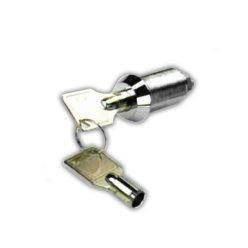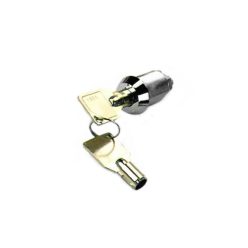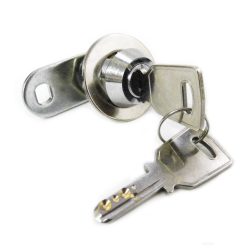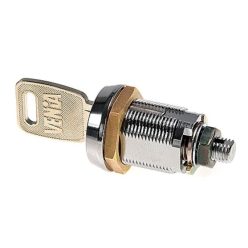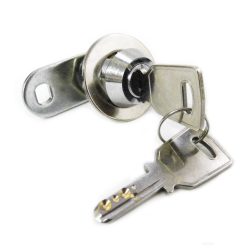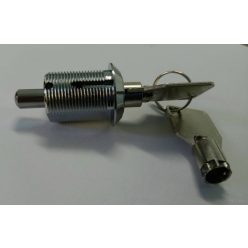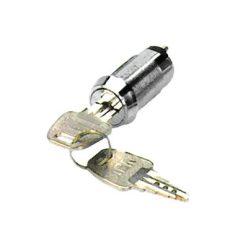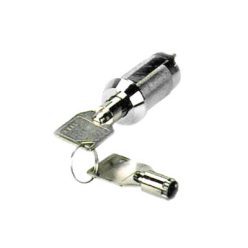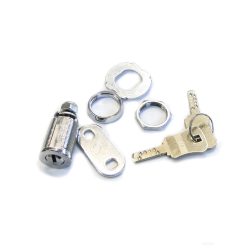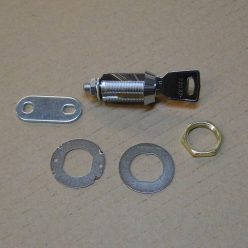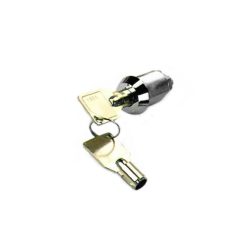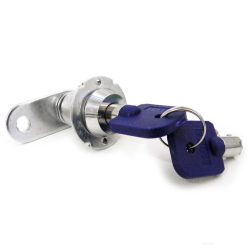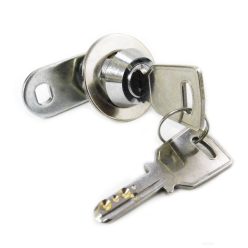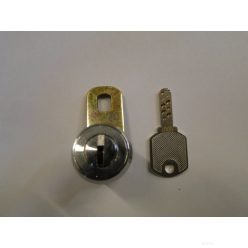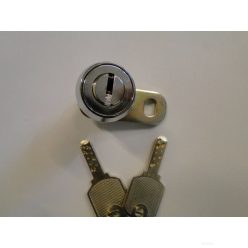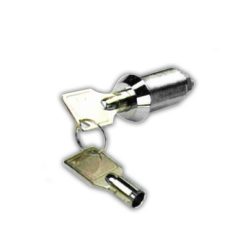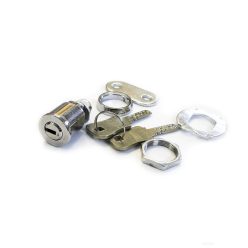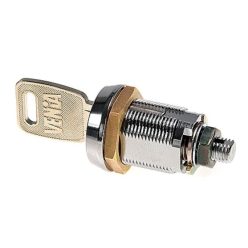Mechanical locks and key switches for kiosks, parcel lockers and industrial control panels
This category includes mechanical cam locks, cabinet locks and key switches designed to secure kiosk housings, parcel locker doors, service cabinets and control panels. You will find panel mount two- and three-position key switches, short and long body cam locks, multi-point cabinet locks and interlocked key switches. These products are based on metal housings, robust mechanisms and configurable key systems, providing reliable physical access control and clear operating modes in unattended self service environments.
Mechanical locks and key switches for kiosks and cabinets
Mechanical locks and key switches are fundamental components wherever physical access has to be controlled in a simple, reliable way. In kiosks, parcel lockers and industrial cabinets they secure doors, drawers and service panels and are often used alongside electronic locks or access control systems. This category focuses on panel mount key switches, short and long body cam locks, multi-point cabinet locks, key operated selector switches and interlocked key switches that can be integrated into kiosk front panels, locker doors and control consoles.
Key switches are typically used for mode selection – for example switching between normal operation, service and maintenance modes – while cam and cabinet locks secure the actual doors and compartments. Units are available in single- and multi-pole versions, with two or three stable positions, spring return options and different contact configurations. Cam locks come with a variety of cam shapes and lengths so that the locking points can be matched to door thickness and frame geometry. Many product families support different keying schemes, from identical key codes to separate codes and master key systems across large kiosk networks.
Construction, technology and industrial advantages
Mechanical locks and key switches for kiosk and automation use feature metal housings, reinforced lock bodies and mechanisms rated for high cycling in 24/7 environments. Key switch contact blocks are designed for industrial voltage and current levels, allowing direct connection to control circuits or logic inputs. Cam and cabinet locks are optimised for different door thicknesses and mounting methods and can support single or multi-point locking when higher security or sealing performance is required.
Compared to light duty furniture locks, industrial products provide higher mechanical strength, improved resistance to vibration and vandalism, wider temperature ranges and clearly defined operating life. For key switches, key withdrawal positions, positive detents and clear front plate markings help operators and service staff work safely and understand which mode the system is in. These details are essential when your kiosks or machines are installed in public spaces and handled by multiple user groups.
Quality, local technical support and operational aspects
Because mechanical locks and key switches directly influence both security and availability, it is worth investing in industrial grade products backed by local technical expertise and robust logistics.
- local technical support in Hungary that helps you select suitable cam locks, cabinet locks and key switches for kiosks, parcel lockers and control cabinets;
- regular maintenance including inspection of mounting hardware, cams, keyways and contact blocks, plus cleaning and lubrication where needed to prevent sticking or contact failures;
- observing recommended operating conditions such as temperature, humidity and contamination limits, especially for outdoor or semi outdoor kiosk installations;
- maintaining stock of critical lock and key switch types and arranging scheduled deliveries for network rollouts or retrofit projects across multiple locations;
- flexible logistics with multiple shipping options, customs handling and freight forwarding when hardware has to be deployed to several sites or international projects;
- commercial flexibility including post payment terms, invoicing in foreign currencies and project based pricing so that you can plan total lifecycle cost instead of focusing only on purchase price.
FAQ – mechanical locks and key switches in kiosk projects
- When should you choose a mechanical lock instead of an electronic one?
Mechanical locks are ideal when you need a simple, power independent solution and when physical keys are sufficient for access control. They are often combined with electronic locks, for example as an emergency or service override. - How do industrial key switches differ from standard light duty switches?
Industrial key switches use metal housings, robust contact blocks and key driven actuation so that only authorised staff can change operating modes. They are rated for higher currents, longer life and more demanding environments than office grade switches. - What should you consider when designing a keying system for a kiosk network?
You should decide early whether you need identical keys, separate keys or a master key structure. Master key systems simplify service work while still limiting local access, which is especially useful in large networks of kiosks or lockers. - How can you reduce vandalism risks for mechanical locks in public spaces?
Choose vandal resistant designs with recessed keyways, reinforced mounting and protected fronts, and pay attention to correct installation. Periodic inspection also helps detect damage early and maintain reliable operation over the long term.


